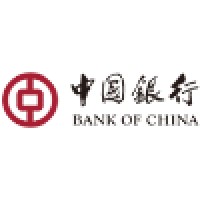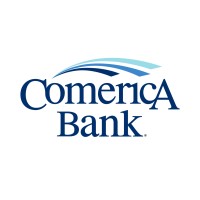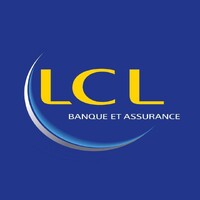Company Cyber Security Posture
NANA
NA Company Details
NA
NA
NA
NA
NA
NA
Scan still pending
NA
NA
Between 200 and 800
This score is AI-generated and less favored by cyber insurers, who prefer the TPRM score.
 NA Global Score
NA Global Score.png)

Company Scoring based on AI Models
| Model Name | Date | Description | Current Score Difference | Score |
|---|---|---|---|---|
| AVERAGE-Industry | 03-12-2025 | This score represents the average cybersecurity rating of companies already scanned within the same industry. It provides a benchmark to compare an individual company's security posture against its industry peers. | N/A | Between 200 and 800 |
Company Cyber Security News & History
| Entity | Type | Severity | Impact | Seen | Url ID | Details | View |
|---|
Company Subsidiaries

NA
Access Data Using Our API

Get company history
.png)
NA Cyber Security News
Raiffeisen Switzerland selects Backbase to power new digital interface
Swiss collective bank aiming to change the way it engages with users.
LLB CEO to join Raiffeisen
Christoph Reich, the current deputy CEO and chief financial officer (CFO) has stepped in to lead LLB on an interim basis with immediate effect.
All Raiffeisen banks in Switzerland finally live on Avaloq
According to Raiffeisen and Avaloq they have made “IT history” as one of Switzerland's biggest IT projects was “successfully completed at the start of January”.
Former Swiss 'banker of the year' jailed in high-profile fraud trial
After one of Switzerland's highest-profile corporate crime trials in decades, Zurich's district court convicted Vincenz, a former Swiss 'banker ...
Raiffeisen appoints investment advisory head
Yvan Roduit has been appointed as head of investment advisory at Raiffeisen Switzerland, he told Citywire. He started on 1 July after a ...
Raiffeisen Introduces PhotoTAN to Protect Customer Transactions Against Malware
The new security solution, dubbed PhotoTAN, is recommended not only for payment authorization, but also for secure logins.

NA Similar Companies

AU SMALL FINANCE BANK
The dream started two decades ago by Mr. Sanjay Agarwal, a merit holder Chartered Accountant and a first generation entrepreneur, along with his proficient team. Together, the dexterous team embarked on a journey of excellence while enriching lives along the way. What started off as a dream to be

Yapı Kredi
Yapı Kredi has been sustainably strengthening its market positioning in the sector since its establishment in 1944 through a customer-centric approach and focus on innovation. Yapı Kredi is the 3rd largest private bank in Turkey with total assets worth TL 411 billion as of the end of 2019. Constantl

Bank of China
Bank of China, include BOC Hong Kong, BOC International, BOCG Insurance and other financial institutions, providing a comprehensive range of high-quality financial services to individual and corporate customers as well as financial institutions worldwide. Over the past century, Bank of China pla

Comerica Bank
Comerica Incorporated (NYSE: CMA) is a financial services company headquartered in Dallas, Texas, strategically aligned by the Business Bank, the Retail Bank, and Wealth Management. The Business Bank provides companies of all sizes with an array of credit and non-credit financial products and servic

LCL
Depuis son rapprochement avec le Groupe Crédit Agricole SA en 2003, le périmètre d'activités de LCL, réseau national de banque de détail, est axé sur le marché des particuliers, des professionnels, des entreprises et la Banque privée. LCL est une banque de proximité qui compte 2 065 implantations

Crédit Mutuel
Un modèle mutualiste au service des clients et des salariés. Réseau bancaire mutualiste constitué de 2124 Caisses locales le Crédit Mutuel se compose de 18 fédérations régionales, couvrant tout le territoire français. Société de personnes et non de capitaux, le Crédit Mutuel n’est p

Frequently Asked Questions
Explore insights on cybersecurity incidents, risk posture, and Rankiteo's assessments.
NA CyberSecurity History Information
How many cyber incidents has NA faced?
Total Incidents: According to Rankiteo, NA has faced 0 incidents in the past.
What types of cybersecurity incidents have occurred at NA?
Incident Types: The types of cybersecurity incidents that have occurred include .
Additional Questions
What Do We Measure?
















Every week, Rankiteo analyzes billions of signals to give organizations a sharper, faster view of emerging risks. With deeper, more actionable intelligence at their fingertips, security teams can outpace threat actors, respond instantly to Zero-Day attacks, and dramatically shrink their risk exposure window.
These are some of the factors we use to calculate the overall score:
Identify exposed access points, detect misconfigured SSL certificates, and uncover vulnerabilities across the network infrastructure.
Gain visibility into the software components used within an organization to detect vulnerabilities, manage risk, and ensure supply chain security.
Monitor and manage all IT assets and their configurations to ensure accurate, real-time visibility across the company's technology environment.
Leverage real-time insights on active threats, malware campaigns, and emerging vulnerabilities to proactively defend against evolving cyberattacks.




